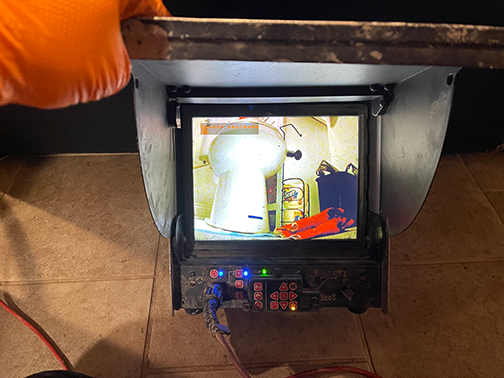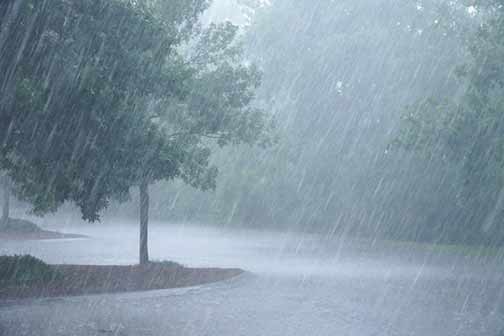Understanding Plumbing Backups During Storms
Storms can be a major concern for homeowners, particularly when it comes to plumbing systems. Heavy rainfall and flooding can lead to overwhelming the drainage systems, causing plumbing backups that pose a risk to your home. Understanding the key factors that contribute to plumbing issues during storms is crucial for effective prevention and protection.
Common Causes of Plumbing Backups During Storms
There are several common causes of plumbing backups during storms. These include:
- Excessive Rainfall: When heavy rainfall occurs, the municipal sewer systems and your home’s drainage system can become overloaded. If the water flow exceeds the capacity of these systems, it can lead to backups.
- Blocked Drains: Debris such as leaves, twigs, and dirt can block drains and gutters, preventing proper water flow and resulting in backups.
- Saturated Soil: Flooding can cause the soil around your home to become saturated, which can lead to increased pressure on your plumbing pipes and eventually cause them to burst.
- Clogged Sewer Lines: Tree roots, grease buildup, and other obstructions in the sewer lines can hinder the flow of sewage and rainwater, leading to backups during storms.
Preventative Measures to Protect Your Plumbing During Storms
Employing preventative measures can significantly reduce the risk of plumbing backups during storms. Here are some practical steps you can take to protect your home:
- Regular Maintenance: Schedule regular inspections and maintenance for your home’s plumbing system. This includes cleaning out gutters, downspouts, and drains to ensure they are free of debris.
- Install Backwater Valves: Installing backwater valves in your plumbing system can prevent sewage from flowing back into your home during heavy rainfall. These valves automatically close when there is a reverse flow, protecting your property from backups.
- Proper Landscaping: Ensure that the landscaping around your home slopes away from the foundation to prevent water from pooling near your house. Additionally, avoid planting trees and shrubs with invasive roots near your sewer lines.
- Waterproofing: Consider waterproofing your basement and other vulnerable areas of your home. This includes sealing cracks in the foundation, installing sump pumps, and using water resistant materials in your construction.
Emergency Measures to Take During a Storm
If a storm is imminent or already occurring, there are immediate steps you can take to mitigate damage to your plumbing system:
- Shut off Water Supply: If you experience flooding or suspect plumbing damage, turn off your main water supply to prevent further complications.
- Inspect Sump Pump: Ensure that your sump pump is in good working condition and functioning properly to keep water out of your basement.
- Monitor Drains and Gutters: Keep an eye on your drains and gutters to ensure they remain clear and free from blockages during the storm.
- Address Minor Issues Quickly: If you notice minor leaks or backups, address them immediately to prevent them from becoming more significant problems.

Post-Storm Recovery and Inspection
Once the storm has passed, it is important to assess your home for any damage and address any plumbing issues that may have arisen:
- Professional Inspection: Hire a local plumber to conduct a thorough camera inspection of your home’s plumbing system. They will identify any hidden issues and provide the necessary repairs.
- Clean Up Debris: Clear any debris that has accumulated around your home, including gutters, downspouts, and outdoor drains. This will prevent future blockages and backups.
- Check for Water Damage: Examine your home for any signs of water damage, such as mold, mildew, or structural issues. Promptly address these problems to prevent long-term damage.
- Review Insurance Policy: Review your homeowner’s insurance policy to ensure it covers water damage and plumbing issues caused by storms. Consider updating your coverage if necessary.
The Importance of Community and Local Infrastructure
Protecting your plumbing during storms is not just an individual concern; it is also a community wide issue. Strong local infrastructure and drainage systems are vital in managing stormwater and preventing widespread backups. Here’s what you can do to support your community:
- Stay Informed: Stay informed about local stormwater management practices and initiatives. Participate in community meetings and advocate for necessary improvements.
- Volunteer: Volunteer in community clean-up events and activities that focus on maintaining and improving local drainage systems.
- Report Issues: Report any issues with public drainage systems or infrastructure to your local authorities. Prompt reporting can lead to quicker resolutions and prevent potential problems.
To Sum It Up
Protecting your plumbing during storms requires a proactive approach, including regular maintenance, installation of preventative measures, and immediate action during and after storms. By understanding the common causes of plumbing backups and taking appropriate steps, you can significantly reduce the risk of damage to your home.
Additionally, supporting community initiatives to improve local infrastructure can benefit everyone and contribute to a safer, more resilient environment. Stay prepared, stay informed, and take action to protect your home and plumbing systems from the impacts of storms.


